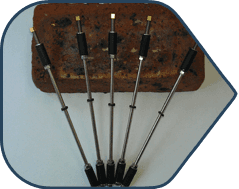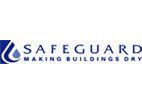Cavity Wall Tie Replacement
Corrosion of Cavity Wall Ties and Their Replacement
The corrosion of cavity wall ties results in the expansion of the metal embedded in the outer leaf of the masonry, eventually to a size several times its original thickness. Symptoms of cavity wall tie corrosion are usually visible through the 'jacking' action associated with this phenomenon. This can been seen as cracks within the mortar bed joints, cracks to external render finishes, slight separation of cross walls or stair stringers from flank walls, cracking of ceiling finishes as ceiling joists are pushed up, cambering of window cills and diagonal cracks over windows, especially soldier arch lintels. The advanced corrosion of wall ties can incorporate significant outward bulging of the walls in addition to the above symptoms. Recently pointed mortar bed joints at regular intervals would also indicate that corrosion of the cavity wall ties might have occurred.
The Solution
If symptoms are recognised before damage has progressed too far, cavity wall tie replacement can be undertaken. This replacement process consists of the location of the original wall ties by means of a metal detector and the installation of a new alternative grid of corrosion resistant wall ties.
The new wall ties are mechanically or resin fixed to the masonry dependent on the structure. Once the new wall ties have been installed the old corroded ties are isolated to avoid further 'jacking' of the masonry. The removal of bricks adjacent to the tie is to be avoided, as is bending the original tie back into the cavity. Isolation of the original wall tie within the outer leaf of the cavity is recommended as this causes minimal disruption structurally and aesthetically.
Should you require an inspection of your property then please call us on 01227 860 550 or fill in our contact form on this site.
Book now
Thank you for contacting us.
We will get back to you as soon as possible
We will get back to you as soon as possible
Oops, there was an error sending your query.
Please try again later
Anglian Tectonics
The Old Store Church Lane, Chislet, Canterbury,
CT3 4EB
© 2024. The content on this website is owned by us and our licensors. Do not copy any content (including images) without our consent.












